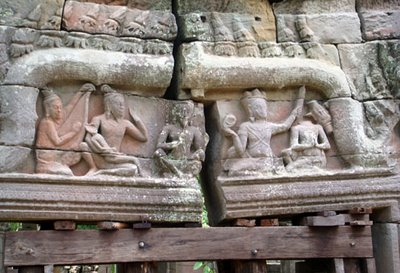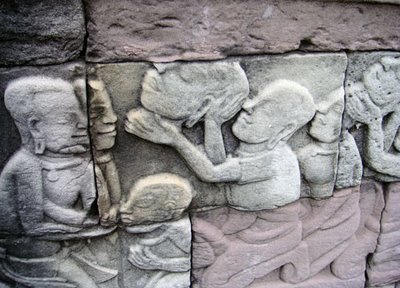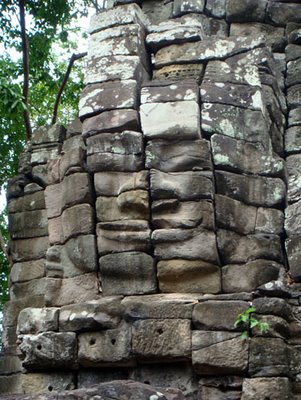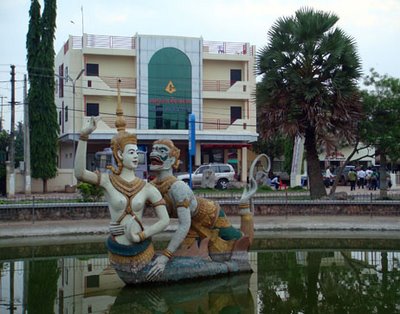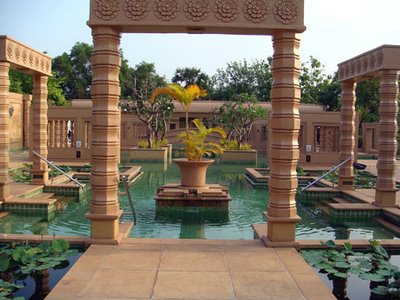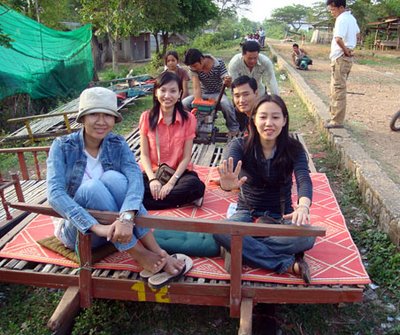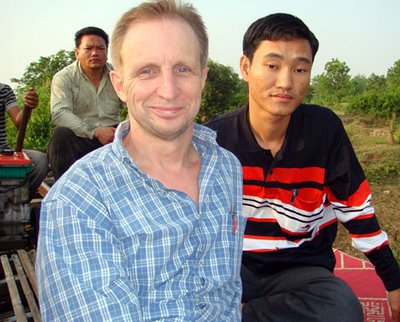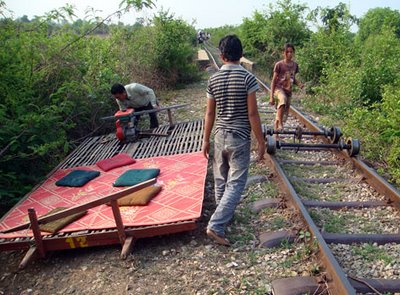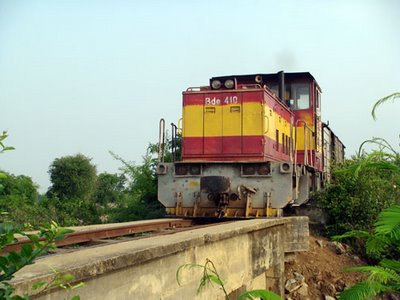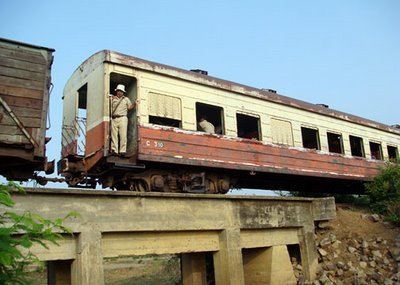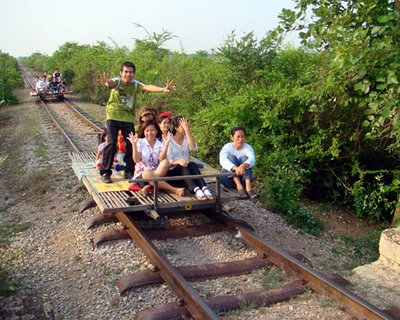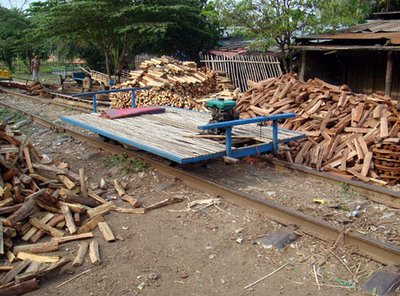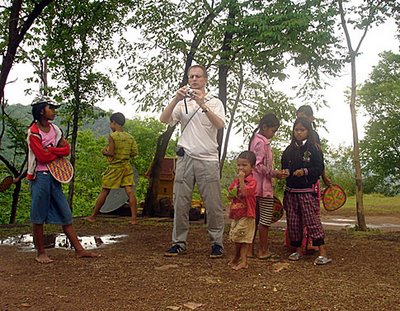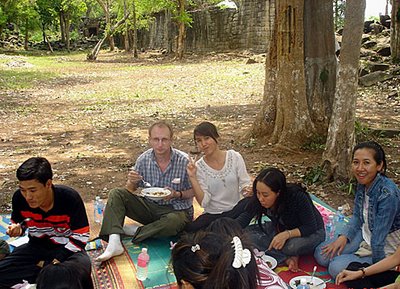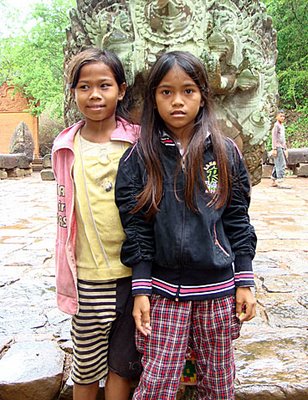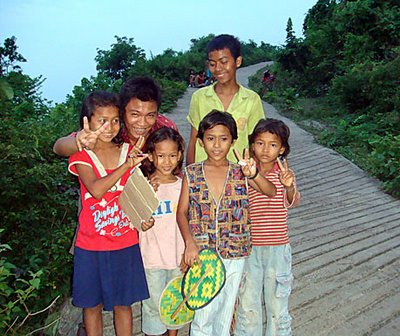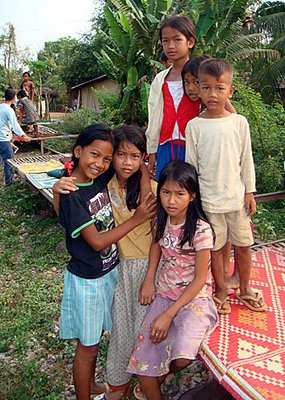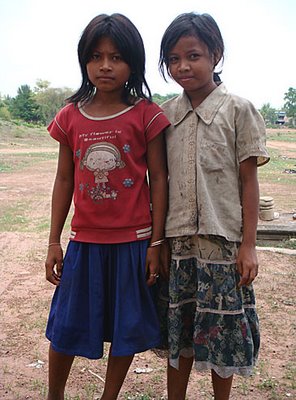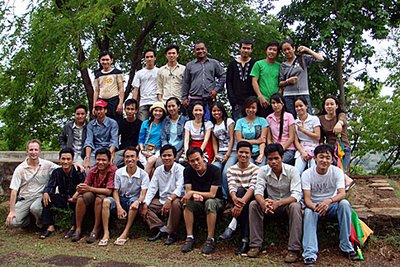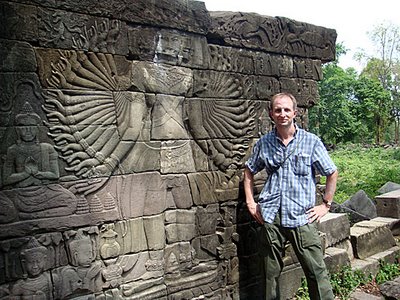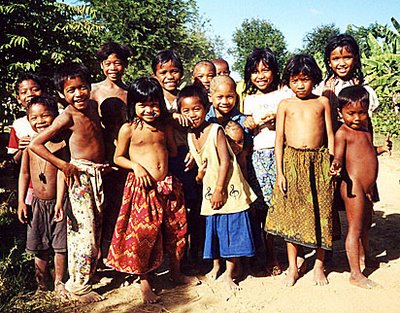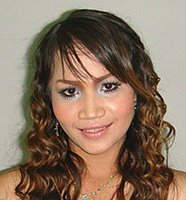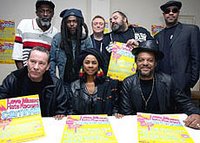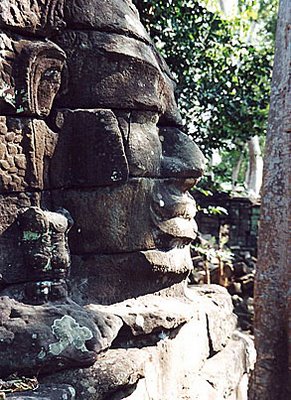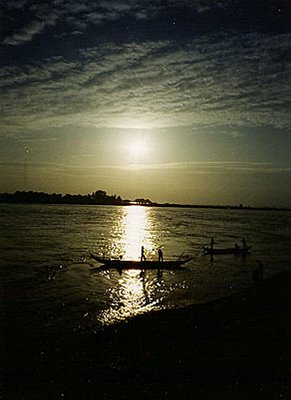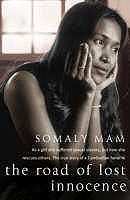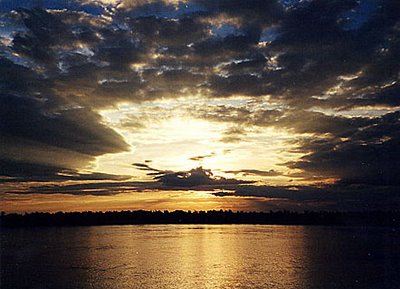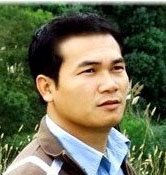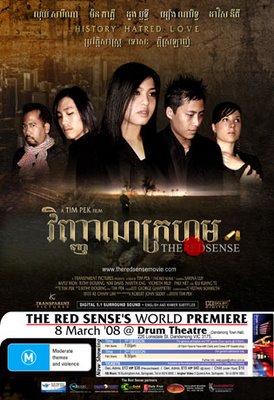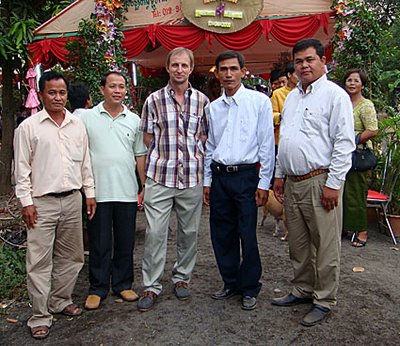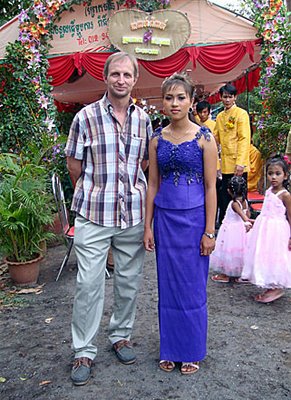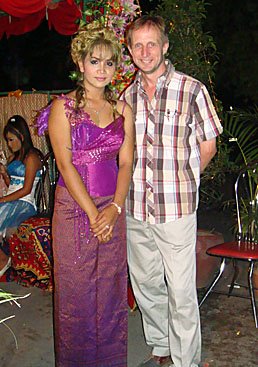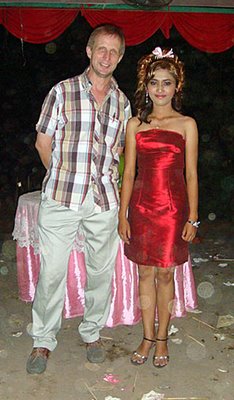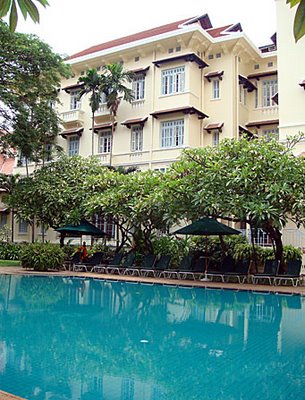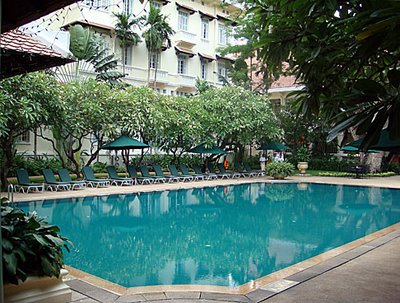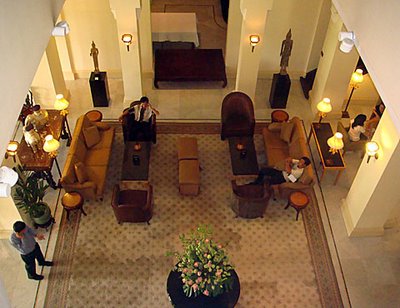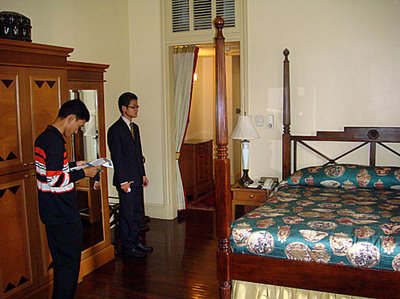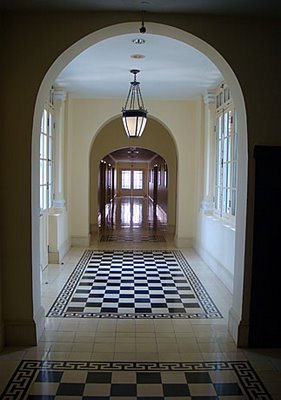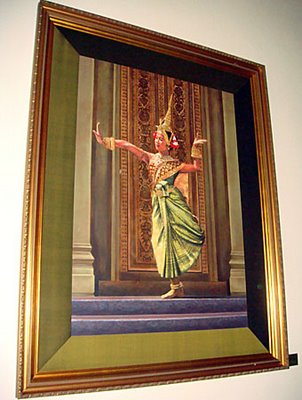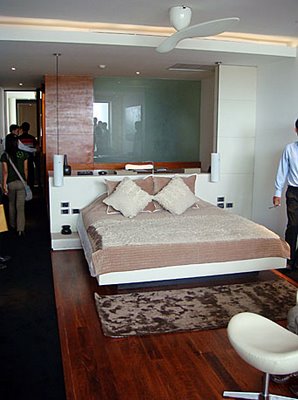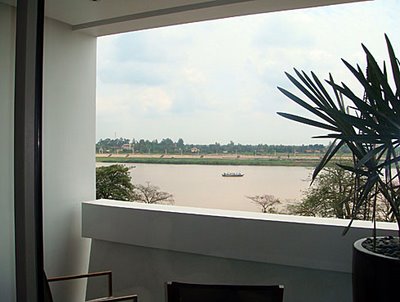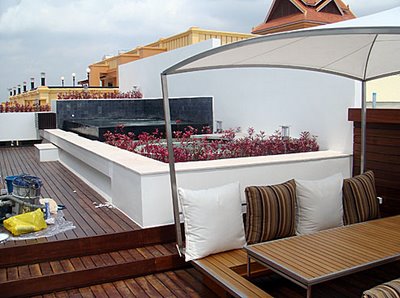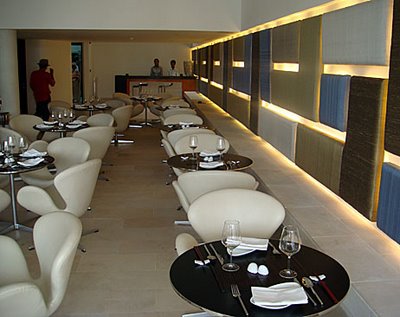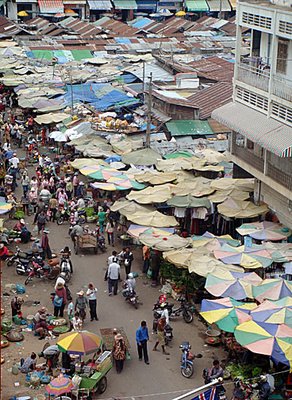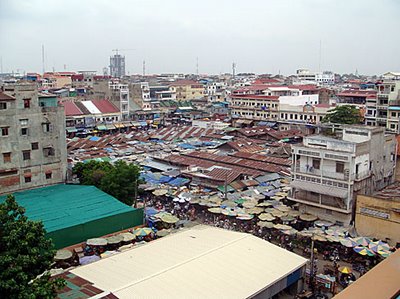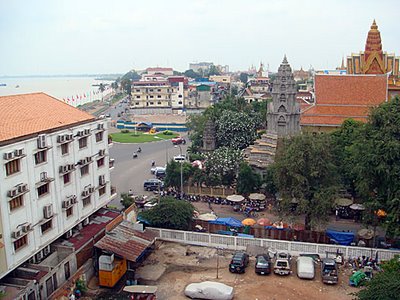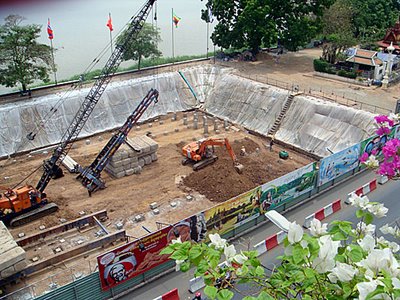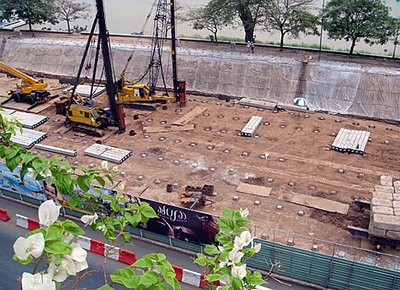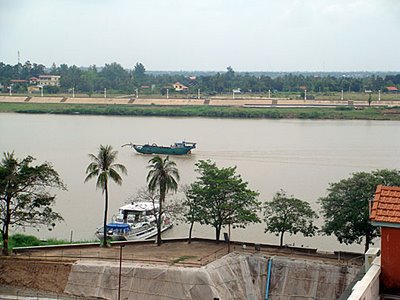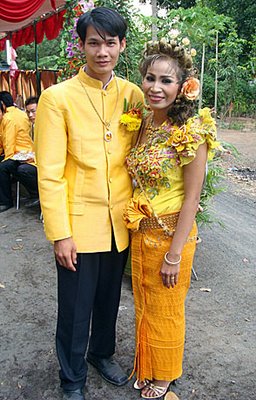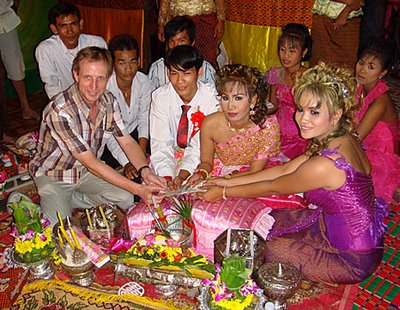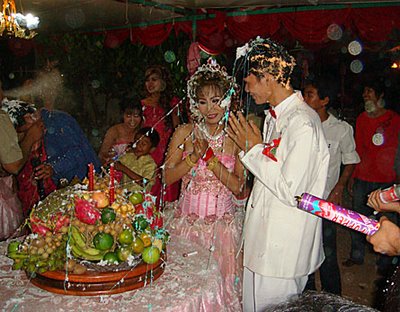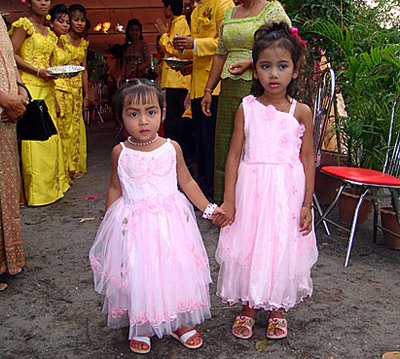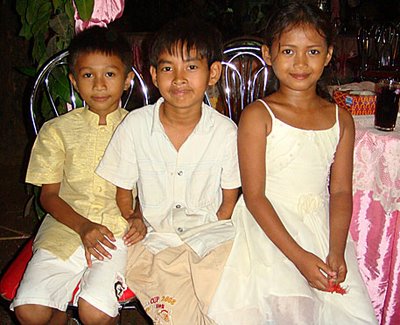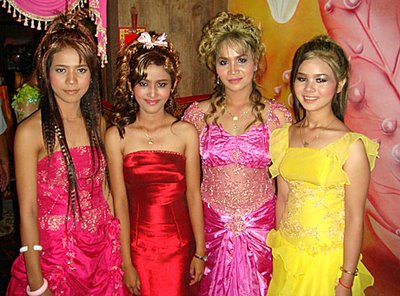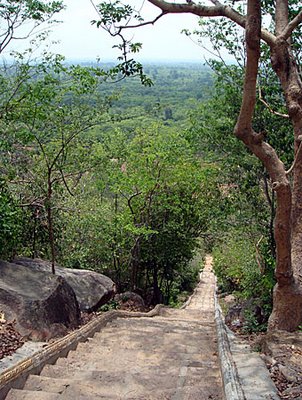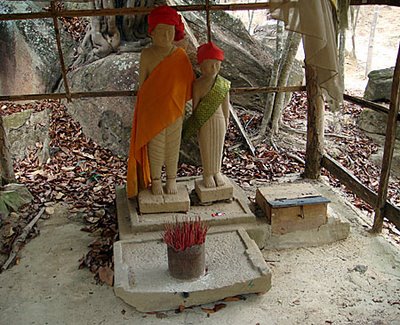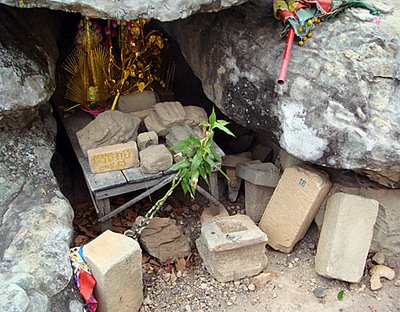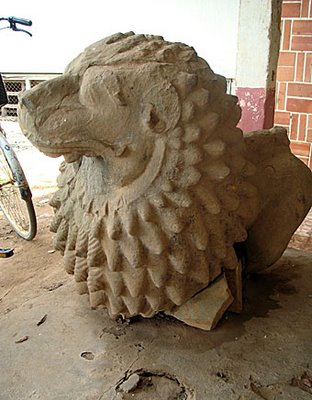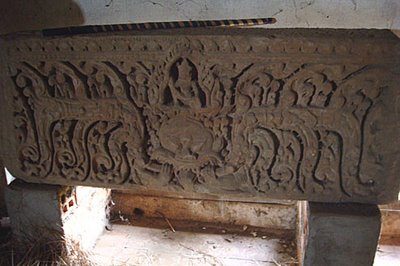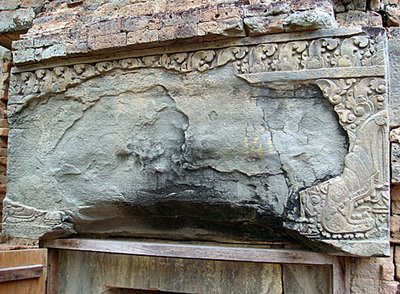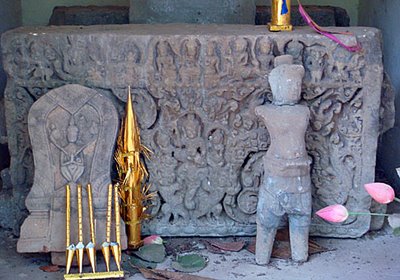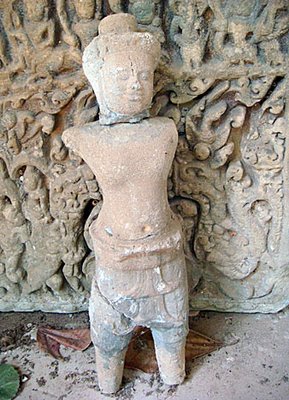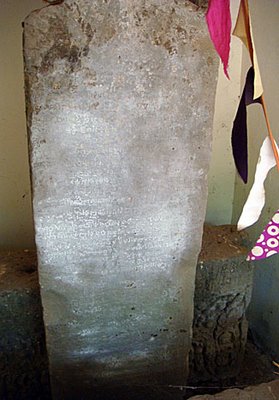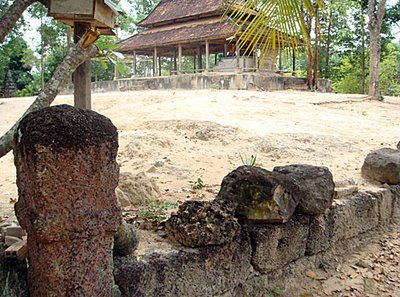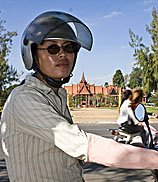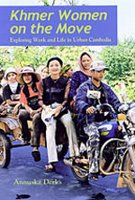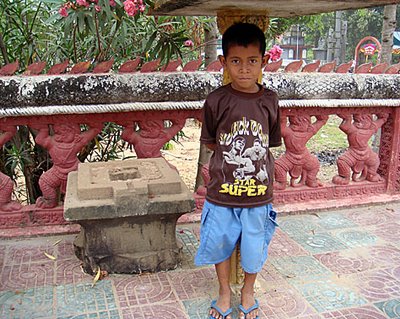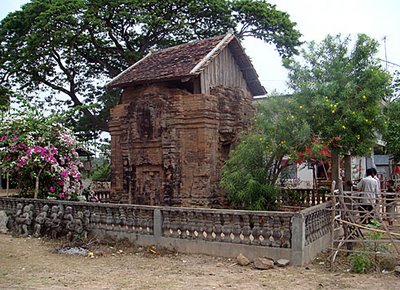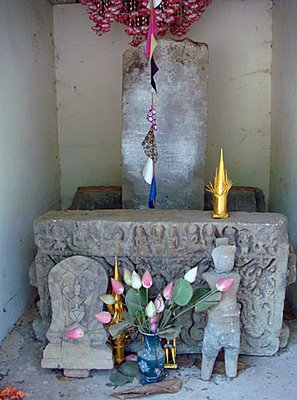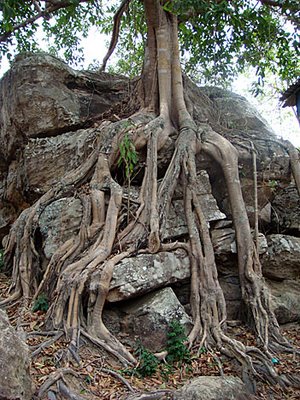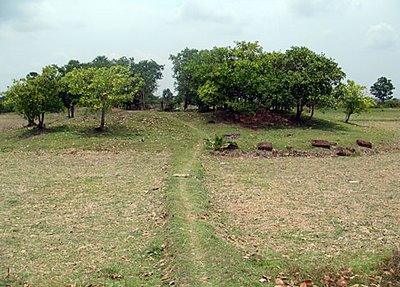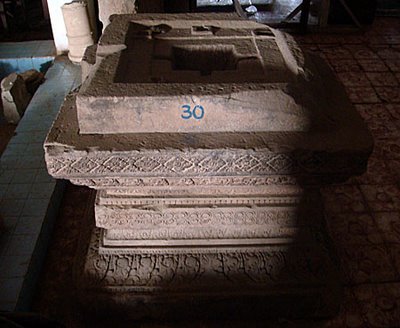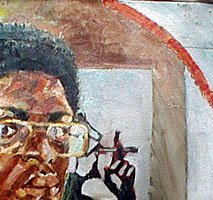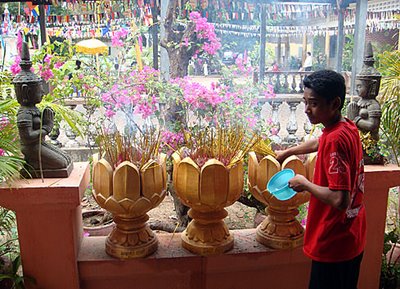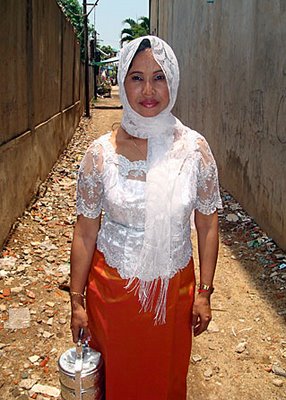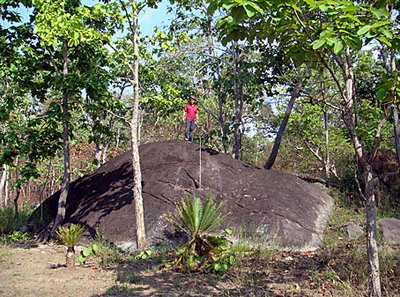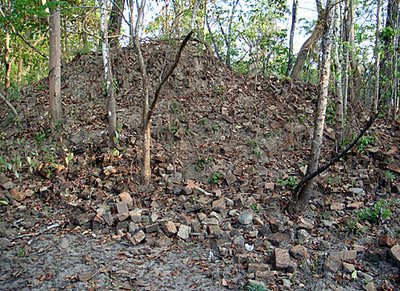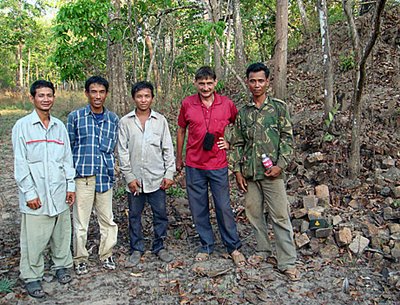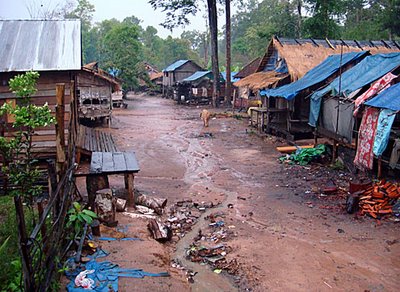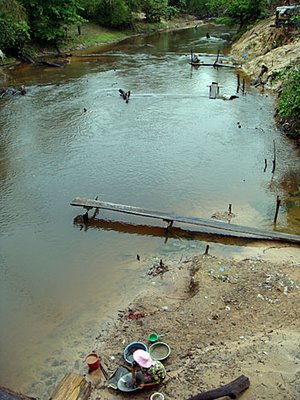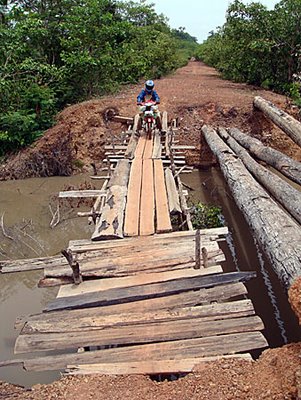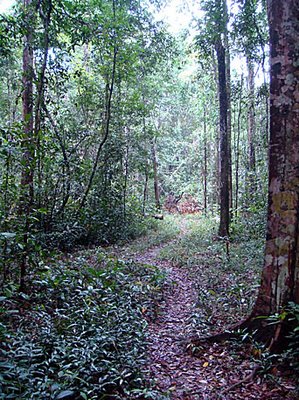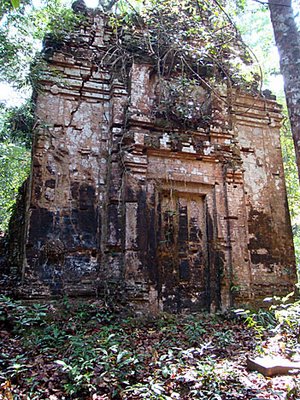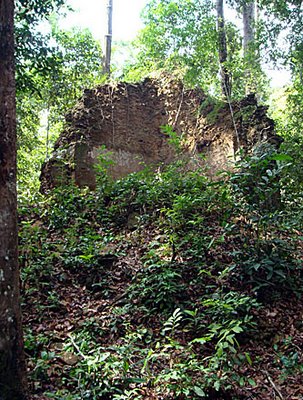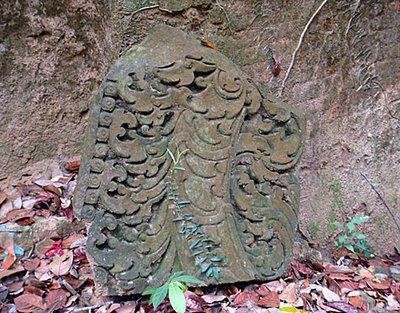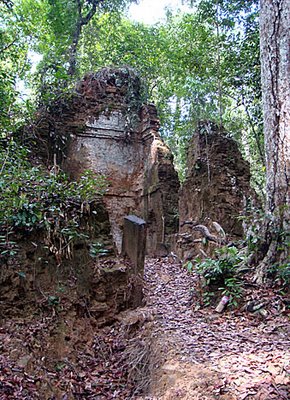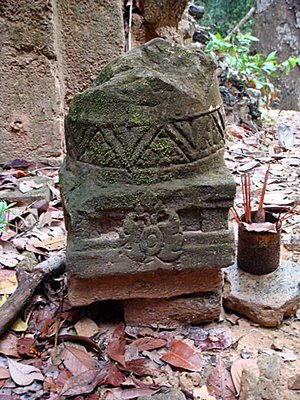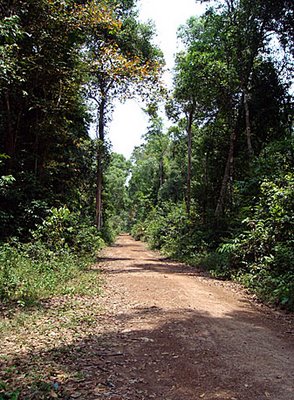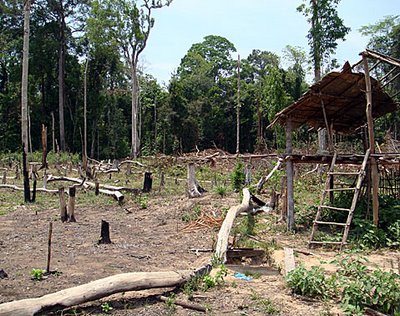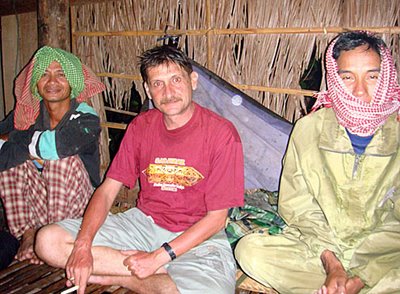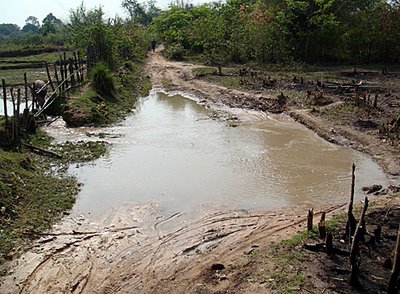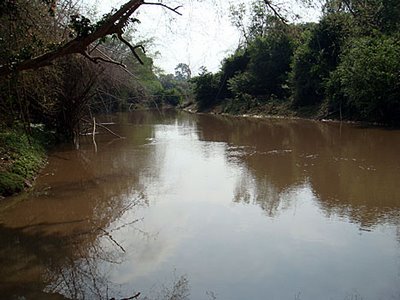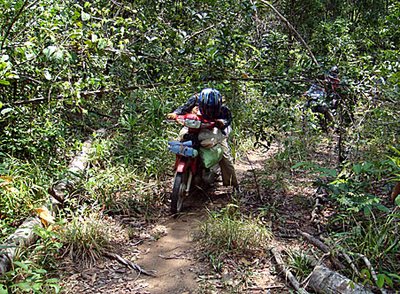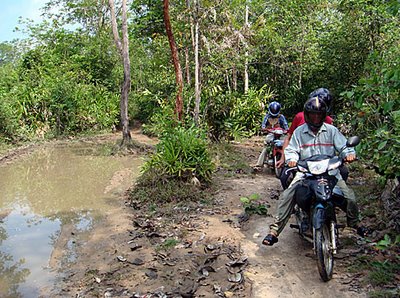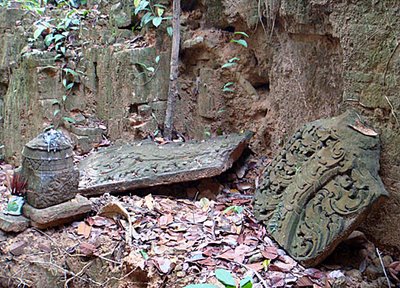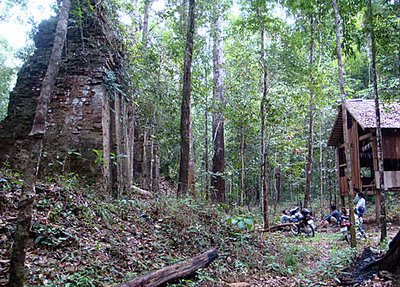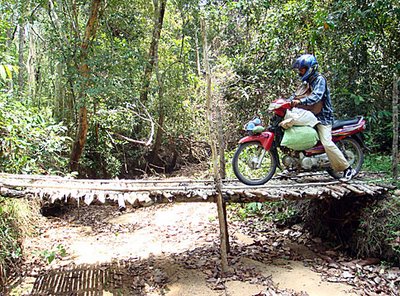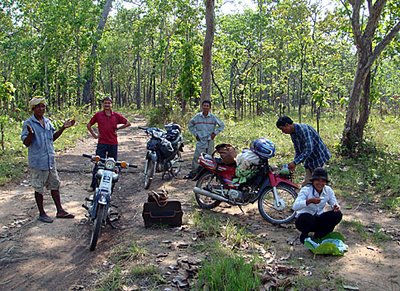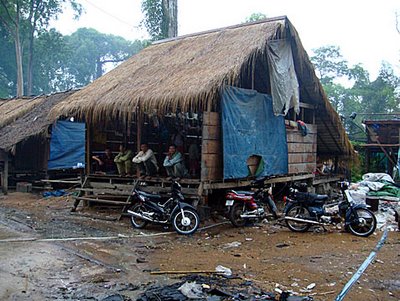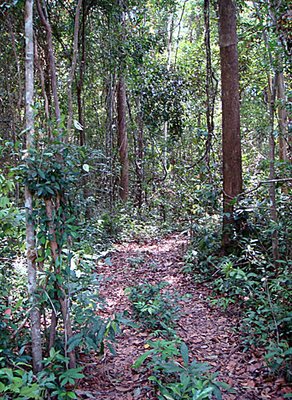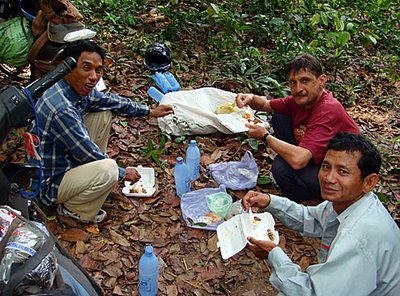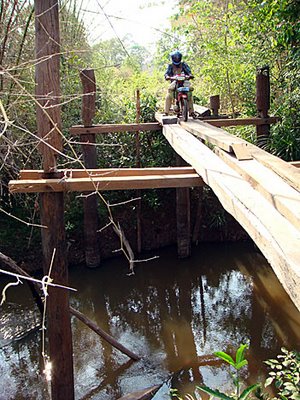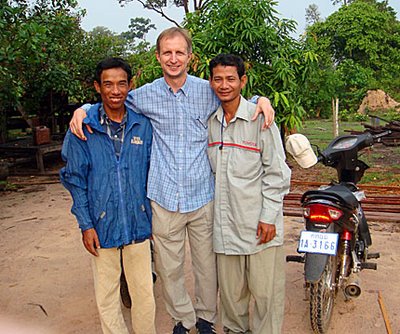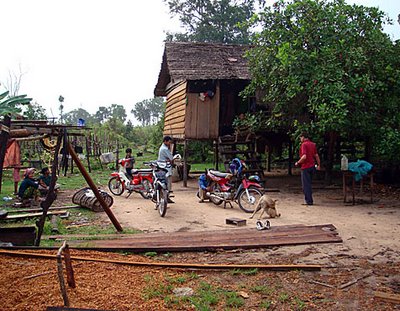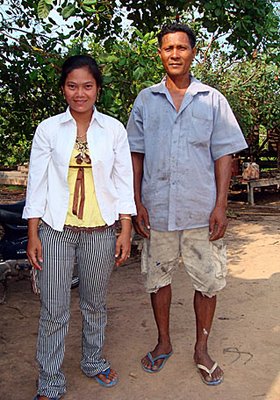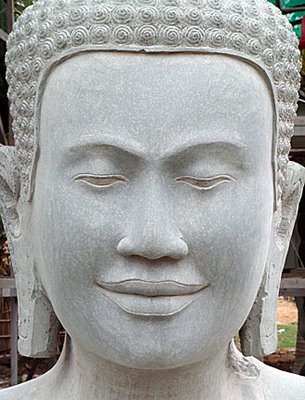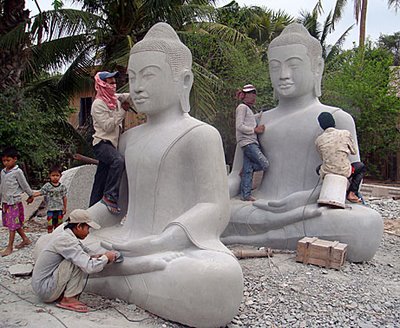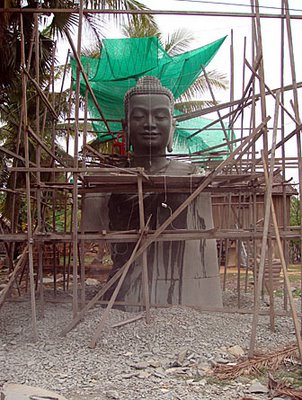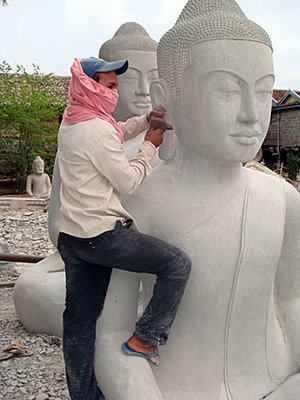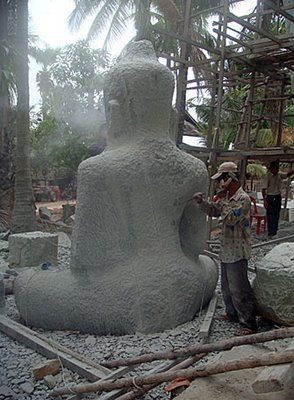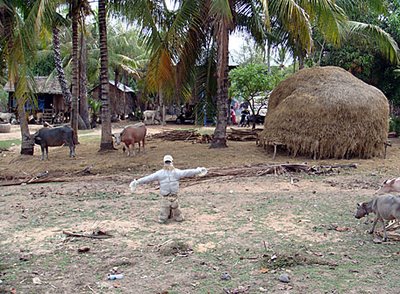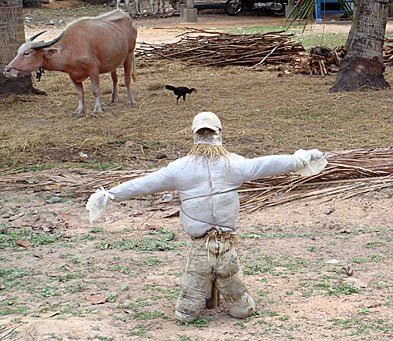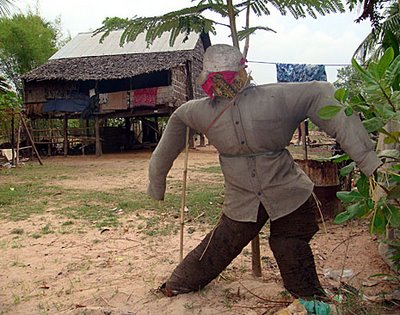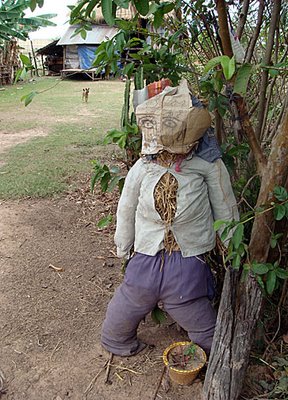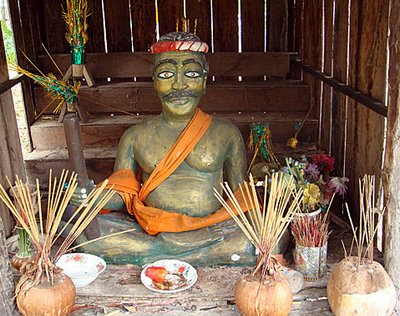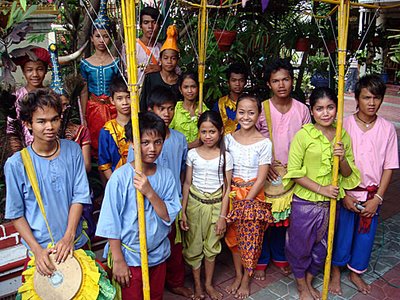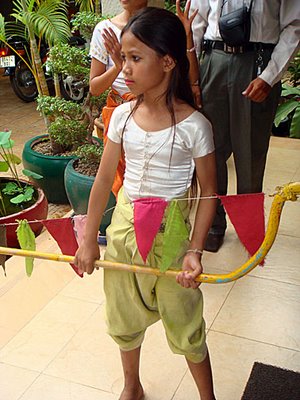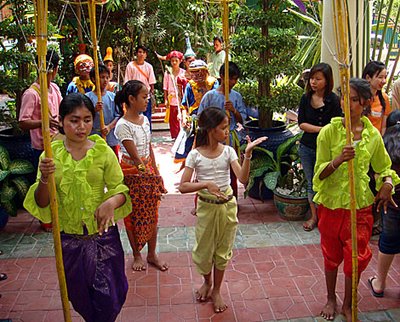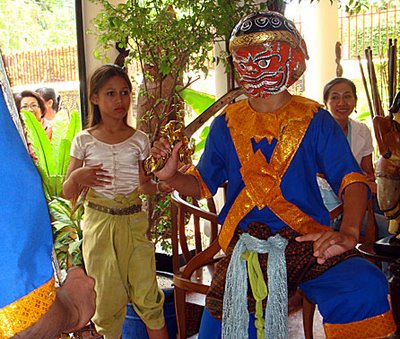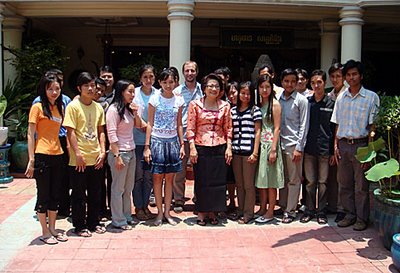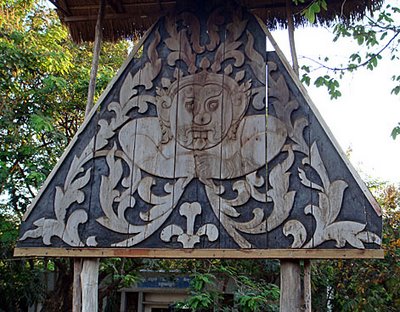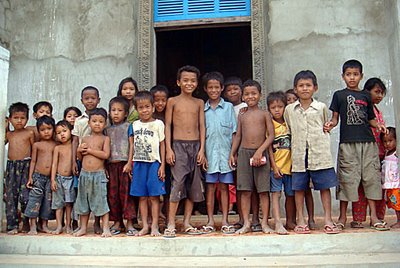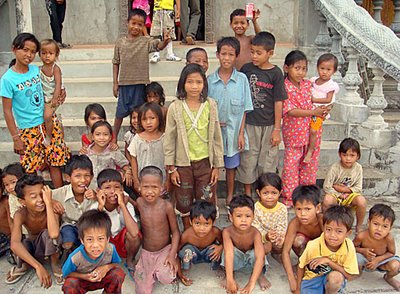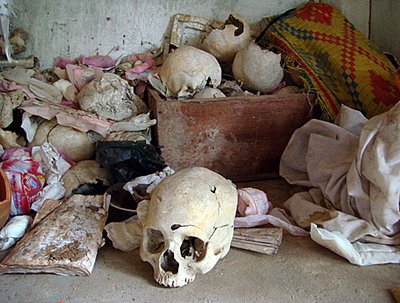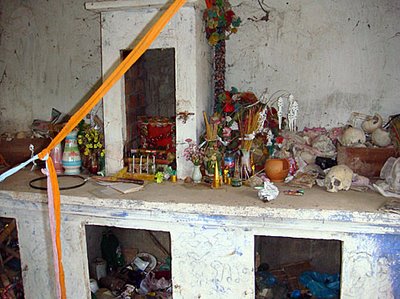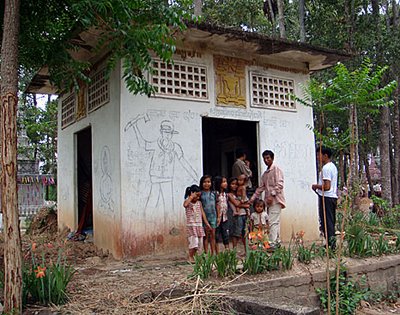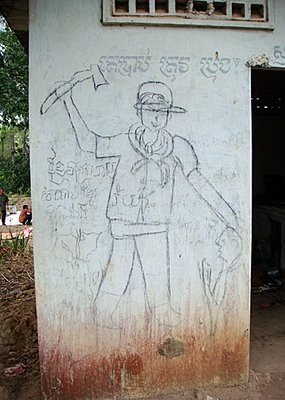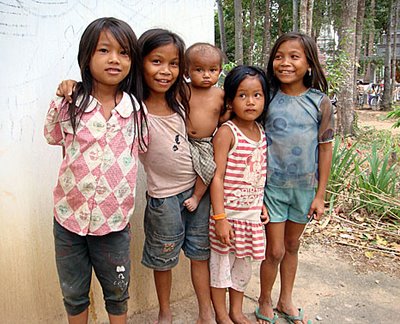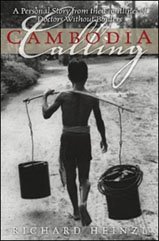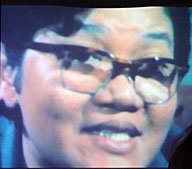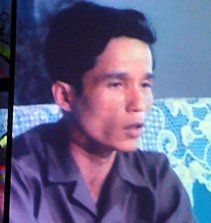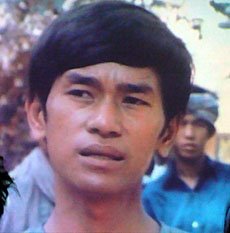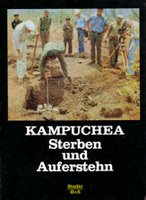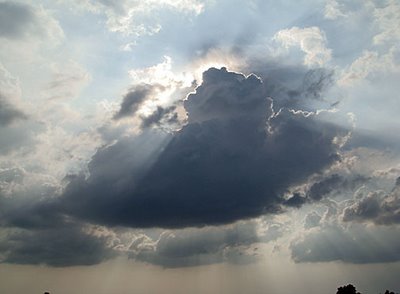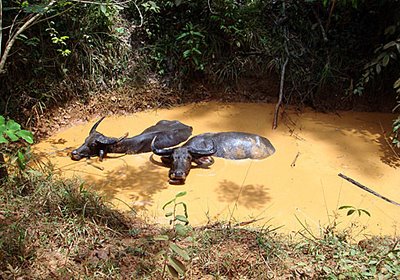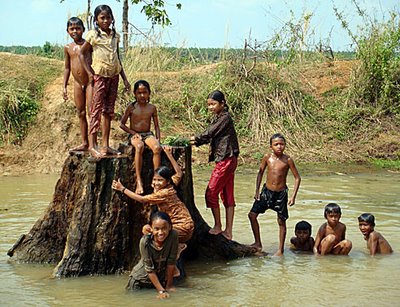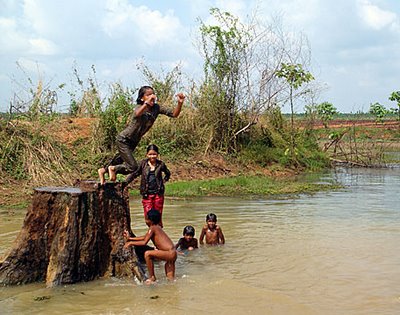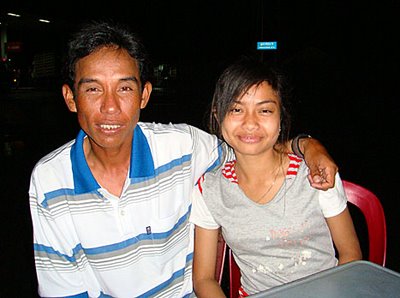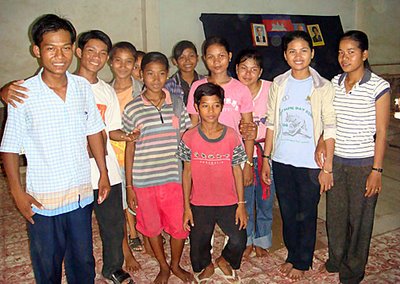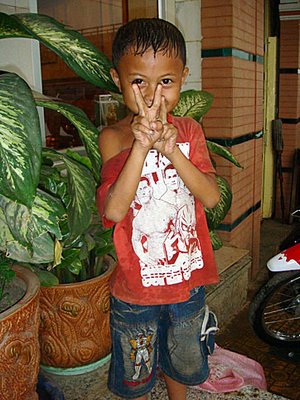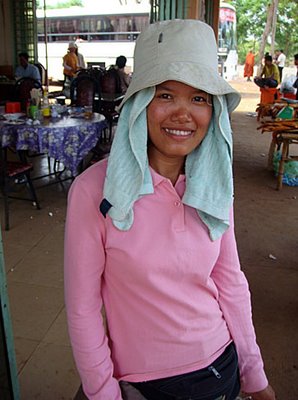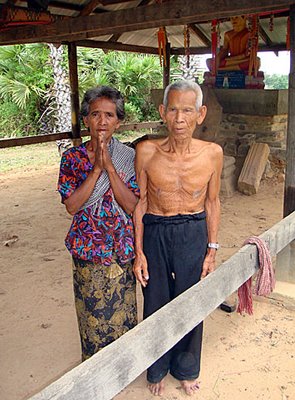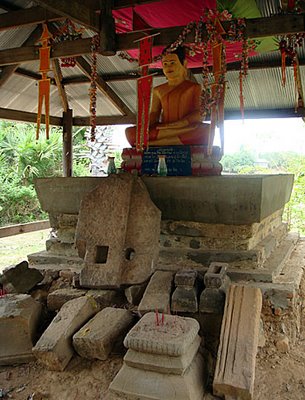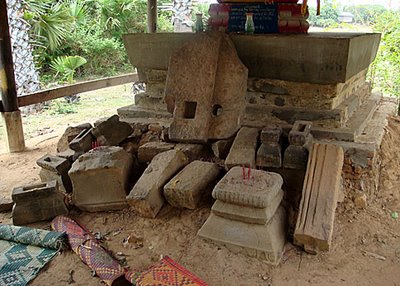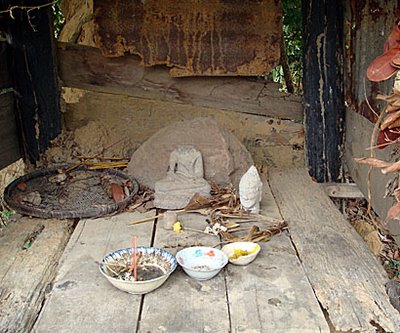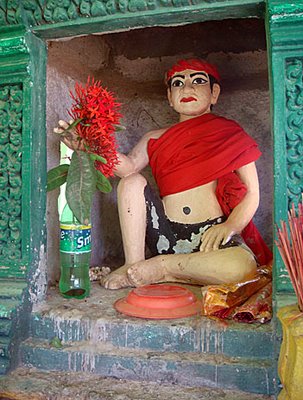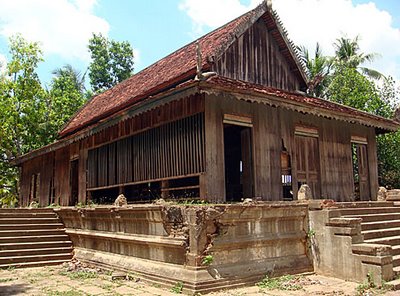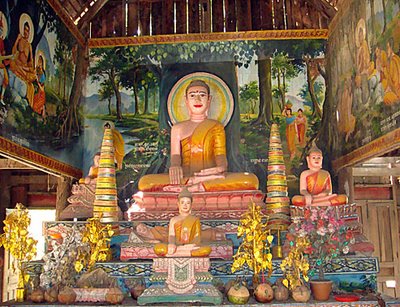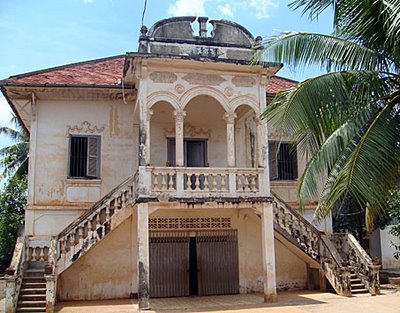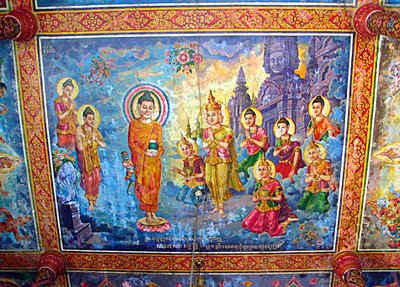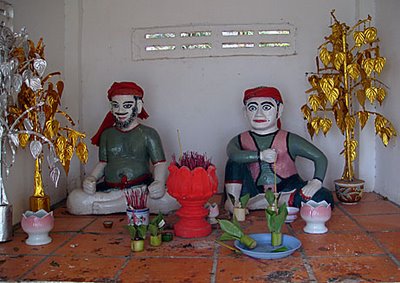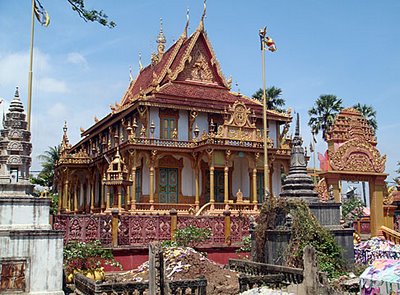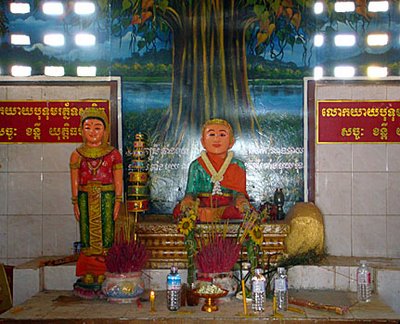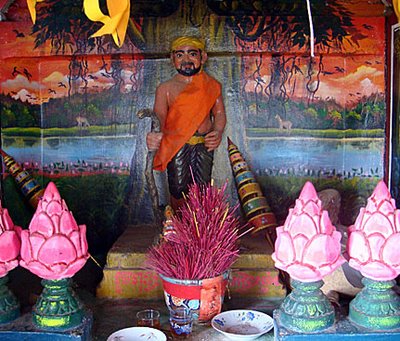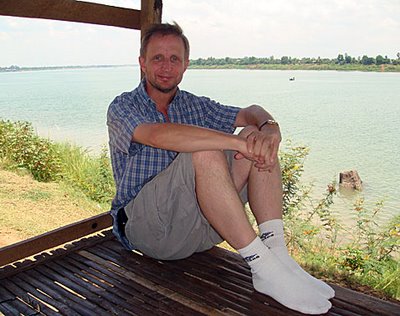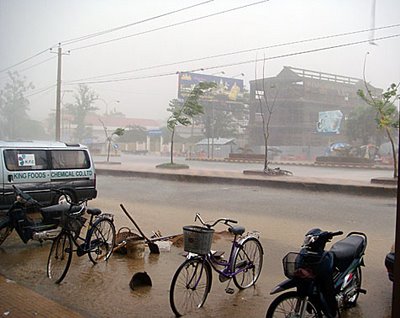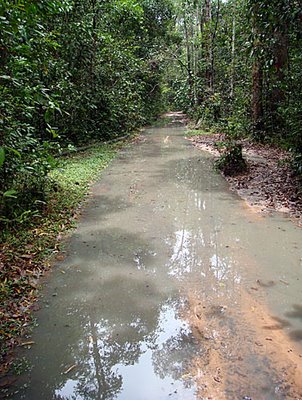Today's Bangkok Post takes a look at the Cambodia film industry.
Moving Images - by Kong Rithdee
Cambodia's film industry may be modest, but it has real heritage and an important role documenting the travails of this most turbulent of countries
Cinema Lux sits at a busy street corner in the Cambodian capital, Phnom Penh. A blocky, modernist structure built in the late 1930s French colonial era, it is now the last functioning movie house in the country. Its huge sign is filled with Cambodian script - so similar to Thai - touting films currently screening. Billboards show a barking, kicking transvestite in a garish Chinese costume and high heels promoting the Thai film Tat Soo Fut, or Kung Fu Tootsie, a gay action-comedy-parody and a mild hit when it opened in Thailand last year. On the wall, posters of other Siamese imports like the horror flick Fadd, or Alone, and the boxing film Chaiya work up the local appetite for upcoming features. Tickets cost the equivalent of 32 baht and the earliest screening is at 9am. The dialogue is Khmer-dubbed and, surprisingly, the projection is 35mm print, not DVD, as I had suspected. A few blocks further on, a cinema from the late 50s has been retooled into a kitschy entertainment complex. (It had opened with the Brigitte Bardot-starring And God Created Woman.) Nearby, another former picture palace sits empty, crumbling in a state of sad dysfunction. Nowadays, Cambodians watch their movies on VCD; Thai, Chinese and local films that are specifically made for the medium.
That stands in sharp contrast with activity on the arthouse front. The films of Paris-educated director Rithy Panh, one of the most respected Khmer filmmakers at work today, have played at the Cannes Film Festival, and his latest effort looks likely to premiere at another prestigious cinefest in Venice. The film is called Un Barrage contre le Pacifique, or The Sea Wall, and stars European arthouse veteran Isabelle Huppert as a struggling French mother in mid 20th century Vietnam. Rithy, who found his way to Paris after his family was persecuted by the Khmer Rouge, adapted the script from the novel by Marguerite Duras, the towering figure of French intellectualism in the 1970s.
Maybe it helps to appreciate a country by looking at its movies, or at what its people watch on screen. Or at least that's what I was trying to do on my recent trip to Phnom Penh. In the case of Cambodia, a glimpse of its complex transitions from the colonial period to the Pol Pot nightmare, and even from the current state of peace to the promise of future prosperity, is possible, to an extent, through the movies made by and about Cambodians. The awkward need to confront tragic chapters of history, to look back not in anger, can also be registered as there are now attempts to reconnect the present generation of Cambodians to the country's audio-visual heritage. Visitors to Phnom Penh will read in the Lonely Planet guidebook that one of the causes of the country's political instability in the 1960s was King-Father Norodom Sihanouk's passion for filmmaking, which distracted him from running the state. Though not entirely inaccurate, the claim smacks of sensationalism and adds an air of cinematic myth to a country that once boasted the greatest civilisation in Southeast Asia.
Before looking at King Sihanouk's movies, however, we swung by a few other film-related "attractions". The Killing Fields of Cheung Ek entered the mainstream consciousness through the 1984 British film (shot mostly in Bangkok), and it remains a vast, sun-searing plain where the mass graves of 17,000 Khmer Rouge victims were buried. Despite the heat, visitors are likely to describe the encounter as "chilling" - certainly much more chilling than watching the film. Chances are that The Killing Fields once opened at Cinema Lux. (Imagine if someone had made a film about our own October 14 massacre and screened it at Scala a few years after the incident.)
Staring back into ugly history is not a favourite pastime in Thailand, and we may learn something from Cambodia. Much more chilling than the Killing Fields is the Tuol Sleng prisoner camp, better known as S-21, a macabre, barbed-wire compound of terror in downtown Phnom Penh where nearly 17,000 captives were tortured and killed by the Khmer Rouge regime from 1975 to 1979. The place has been transformed into a museum, and it is the subject of Rithy Panh's most famous documentary, S-21: The Khmer Rouge Killing Machine, which premiered at Cannes in 2003. Rithy's film brings back an S-21 survivor to meet their former tormentors - who were only boys of 13 to 20 then - and the confrontation is both a form of provocation and a radical attempt to find a cure for the abiding aftermath of such a shocking atrocity.
Walking into the actual S-21 is like snooping around the set of a horror film. The place was originally a school, so the classrooms doubled perfectly as crude prison cells. The disturbing feeling is curdled from the fact that every simple, harmless object we see - a metal bed, an exercise bar, a jar of water, a closed room - was once an instrument of terror that carries the real weight of history, a fairly recent history to boot. Someone was actually chained to that bed, or someone was actually hung from that seemingly ordinary bar and dunked head-first into a jar of filthy water. This before they were shipped off to the Killing Fields. At the entrance of S-21 there's a DVD stall. Among the selections are pirate copies of television documentaries about the Pol Pot regime, and of course the Rithy Panh film. What caught my eyes, though, was a Thai film called Kampuchea, directed by Toranong Srichua in the mid 1980s. It's a Thai film with Thai actors, and tells the rather sensational story of a Cambodian girl who endures persecution from the Khmer Rouge. Again, it's highly possible that the movie once played at Cinema Lux.
Not all cinematic material in Phnom Penh is related to the villainy of the Red Khmer though. Cambodia has no film archive (though it has a national archive where documents from the colonial period and on through the Pol Pot years are preserved), and many of the films made before 1975 were destroyed when the city fell to the communist army. Then there was the controversy, that became public in the mid-90s, about the "missing films" - purportedly rolls of films made before the Khmer Rouge as well as Pol Pot propaganda movies, all considered valuable national heritage and audio-visual artefacts that disappeared from Cambodia's Ministry of Culture. Some archivists believe that the missing films might have ended up in Paris, though their location has not been determined to this day.
Films from the Pol Pot period are significant because they are a proof of history and a depiction of the ideology that brought about such catastrophe. And yet the films made before those years are not simply nostalgic treasures but a record of a different political and social era. Fortunately, we can view some of them in Phnom Penh right now. In December 2006, Rithy Panh won support from an array of French cultural institutes to set up a resource centre called Bophana, where visitors can access digital archives of Cambodia-related movies, documentaries, TV clips, propaganda films and King Norodom Sihanouk's feature films made in the 1960s. Bophana is funded largely by the Thompson Foundation; the centre has a French director, is run by both Cambodian and French staff, and offers free services to the public. From its database, which has largely been licensed from French television and film archives, we're able to watch clips of the Royal Palace in Phnom Penh from 1899; the visit of general Charles de Gaulle in 1966; the Khmer Rouge propaganda films showing young Cambodians working in factories and fields and singing revolutionary songs; the return of Phrae Viharn to Cambodia after winning a case against Thailand in 1963, and more.
At least 18 works by King Norodom Sihanouk (father of the present King Sihamoni) are kept in the digital database. King Sihanouk directed both documentaries and fiction films, as well as penning scripts for other directors in the heyday of his filmmaking activities in the 1960s. At Bophana, I looked at his film Rose of Bokor, in which the king himself plays a a Japanese general who arrives to help liberate Cambodia from French rule (the movie also thanks Kim Il-sung of North Korea for support). In Crepescule, King Norodom plays a prince of Siem Reap who's tangled up in a three-way romance with a visiting Indian princess, played by HM Queen Norodom Monineath Sihanouk, and a common nurse who takes care of him. And in the period piece Prachea Komar, the king directed his then-teenage son, the present HM King Sihamoni, who plays a young prince who rules his ancient sandstone kingdom with valour and justice.
All this represents the surprising riches of Cambodia's history of moving images, from the time of royal movies to the red-carpet receptions at Cannes Film Festival. At the same time, sloppy Thai comedies and VCD flicks still dominate the screens from Phnom Penh to Battambang. If a country is what its movies are, then Cambodia, still drowsy from its turbulent past, has much more to offer than glamorous colonial buildings and the overcrowded Angkor Wat.
